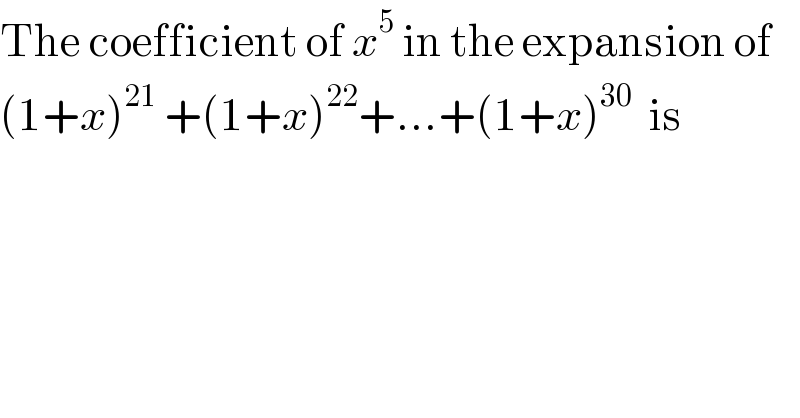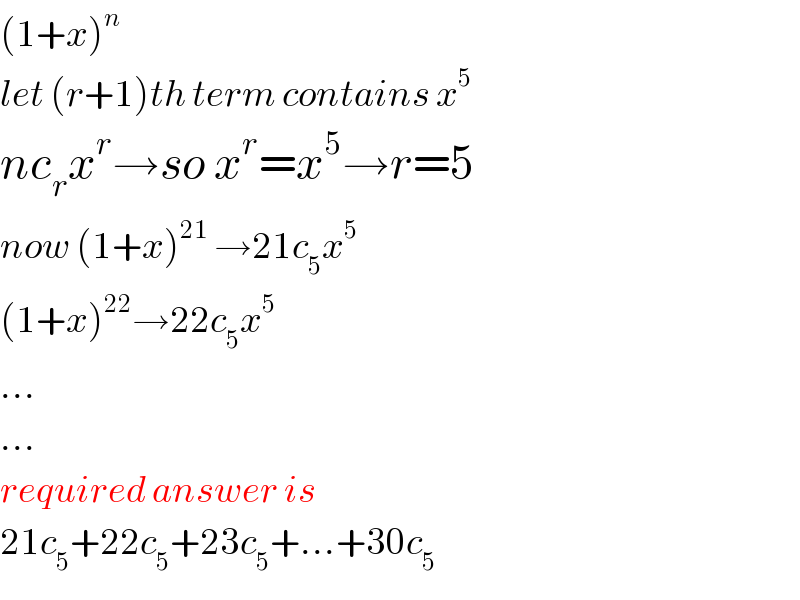Question Number 56095 by gunawan last updated on 10/Mar/19

Answered by tanmay.chaudhury50@gmail.com last updated on 10/Mar/19

Answered by mr W last updated on 10/Mar/19
![(1+x)^(21) +(1+x)^(22) +...+(1+x)^(30) =(((1+x)^(21) [(1+x)^(10) −1])/((1+x)−1)) =(((1+x)^(31) −(1+x)^(21) )/x) coef. of x^5 term is: C_6 ^(31) −C_6 ^(21) =682017](https://www.tinkutara.com/question/Q56106.png)
Commented by gunawan last updated on 10/Mar/19

Commented by malwaan last updated on 10/Mar/19

Commented by mr W last updated on 10/Mar/19
![S=(1+x)^(21) +(1+x)^(22) +...+(1+x)^(30) is a geometric progression with a_1 =(1+x)^(21) q=(1+x) n=10 S=((a_1 (q^n −1))/(q−1))=(((1+x)^(21) [(1+x)^(10) −1])/((1+x)−1)) =(((1+x)^(31) −(1+x)^(21) )/x) x^6 term of (1+x)^(31) is C_6 ^(31) x^6 x^6 term of (1+x)^(21) is C_6 ^(21) x^6 x^5 term of S is ((C_6 ^(31) x^6 −C_6 ^(21) x^6 )/x)=(C_6 ^(31) −C_6 ^(21) )x^5](https://www.tinkutara.com/question/Q56128.png)
Commented by malwaan last updated on 11/Mar/19

